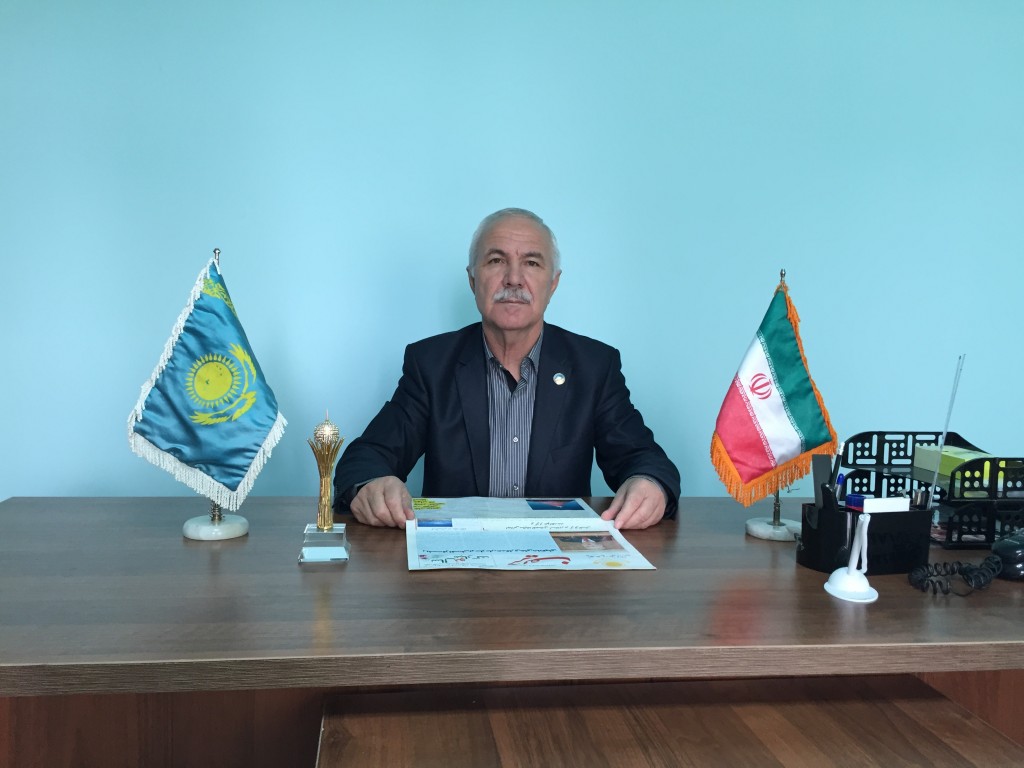The first wave of Iranian migration to Kazakh territories began in the early 19th century, as many individuals travelled to a different country in search of work. The second resettlement came in the 1930s, when the great famine forced thousands of peasants to bring livestock for sale and many remained in the country permanently. In an interview with The Astana Times, the President of the Iranian National Cultural Centre in Shymkent Nurisbek Kapar-Pur told the story of the third echelon of settlers and his personal saga that made him a proud citizen of Kazakhstan.
 “It is well known that the northern part of Iran had been [heavily populated by Azerbaijanis]. After World War II, the Soviet Union had intentions to separate that part and manipulate Azerbaijan, the country that belonged to the Soviet Union at the time, to influence northern Iran,” Kapar-Pur explained.
“It is well known that the northern part of Iran had been [heavily populated by Azerbaijanis]. After World War II, the Soviet Union had intentions to separate that part and manipulate Azerbaijan, the country that belonged to the Soviet Union at the time, to influence northern Iran,” Kapar-Pur explained.
Entwined in political games between Iranian and Soviet military currents, a detachment of about 2,000 Iranian soldiers was betrayed by their commanding officers who sought to overthrow the government. When they were exposed, the soldiers fled to the territory of modern Kazakhstan to avoid unfair persecution in their home country. One of Kapar-Pur’s forefathers was among those soldiers.
“Without the basic knowledge of the country, without understanding the mentality of the local people and without the ability to speak Russian, Kazakh or Azerbaijani, these young Iranians had to adapt to their new home,” he said.
Like many other nationalities which were deported and repressed by Stalin’s authoritative rule, Iranians have managed to thrive to this day, but not without the help of the local population.
“The Kazakhs welcomed [the soldiers]. They were very hospitable; they took them into their homes, two or three persons per family, so the local population didn’t let them die. Of course Iranians had to work to survive and without the language they took all the heavy labour jobs, construction, low-paying jobs. People sympathised with them for being betrayed by the government and for being separated from their families back home in Iran. The soldiers married women of other nationalities; they had no choice, so most Iranian families are mixed. Today, there are about 5,000 Iranians in Kazakhstan according to our data as of 2013. But of course as times progressed, many Iranians changed the nationality on their passports to make their lives easier in Soviet times, because back then it was hard for them to simply get a job and make a living,”said Kapar-Pur.
According to Kapar-Pur, who has served as president of the centre for more than 14 years, Iranians living in Kazakhstan were not allowed to keep in touch with their families until about the 1960s. In the 1980s, they were finally permitted to travel to Iran to visit their families. With the help of the Iranian Embassy in Kazakhstan, no issues currently exist for travel to and from the country. The centre was established in 1997 and the local Iranian community and the embassy have enjoyed close relations.
“So far, groups of 32 and then 41 people have travelled to Iran with the support of the embassy [of Iran in Kazakhstan]. [The embassy] helped with airfare, offering tickets at half price, accommodations in Iran and some other arrangements. Together with the embassy, we also organise numerous art exhibitions; as you probably know Iranians are craftsmen specialising in fields, such as wood and metal masonry. Usually they hold such exhibitions in Astana and Almaty, but they contact us first for guidance and assistance. Also for Nauryz, they organise a trip of an Iranian folklore band. The band performs for free in Astana, Almaty and Shymkent and shares Iranian culture with Kazakhstan. They also bring items like Iranian souvenirs and arts. We also have Sunday classes. The embassy helps us with literature and dictionaries,” said the Iranian community leader.
“I want to be completely frank with you; [living in Kazakhstan] is perfectly suitable for me,” Kapar-Pur said. “My children grew up here, they are citizens of Kazakhstan. I have five children and they all have higher educations and are all married now. My father had nine children and he always was open-minded when it came to marrying other nationalities; that’s why I [am glad] to admit that our family is a little international club. They are all successfully working and we are all living in harmony and peace. Nationality has nothing to do with success; if one wants to be successful – go out and work hard. There is no easy life, even for an Iranian in Iran!”
